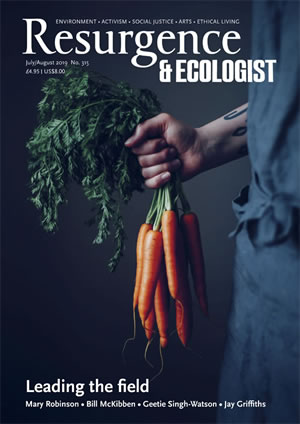Since the heady days of the first outdoor gatherings at Newport, Isle of Wight in the late 1960s, summer in the UK has become synonymous with the music, mud and mosh pits of the festival scene. From the meagrely attended Pilton festival, an event that spawned the legendary Glastonbury experience, British festivals are now attracting up to 4 million attendees per year. The once counterculture-
inspired ethics of their origins, however, have often been replaced by a corporate feeding frenzy and an orgy of disposable consumerism. While mass hedonism may be an understandable response to contemporary life stresses, for those who have witnessed apocalyptic-like post-festival scenes, modern life is literally rubbish, it seems.
As the production staff set to work dismantling the giant stage sets, weaving their forklifts around a multicoloured wasteland of wasp-infested beer can mountains, moribund pop-up tents and transparent inflatable sofas, it can be difficult to grasp what actually brought us here. As a younger punter I was there to experience, whether it was the highs of seeing my favourite band amongst an undulating human ocean of excitement, or the lows of the portaloos in the freezing light of dawn. When all was over, I simply exited in a haze of weary contentment, unaware of what was left behind, only taking pleasure in a near future of clean sheets and the humble comfort of chairs. One long summer working in site clearance a few years later, however, would truly open my eyes.
As the festival-goers drifted homewards, leaving the site in an eerie peace akin to a hastily deserted disaster zone, my fellow workers and I huddled our remaining tents together like a dayglo lost tribe. Lined up in rows of forty or more and armed with black and green plastic bin bags the following day, we were instructed to move across the landscape as human vacuum cleaners, picking through a vast sea of discarded synthetic and rotting organic rubbish in back-breaking unison. The process was then repeated, this time crouching in a micro-sweep intended to remove every trampled shard of plastic, cigarette butt and embedded bottle top the mud revealed.
Clearing one site of vast pastureland or country house estate could take over a week of ten-hour, muscle-contorting shifts. The fine art of cleaning up, whether on an industrial scale or in the domestic setting, is so often rendered invisible, which itself encourages a culture of zero consequences. Such sights and experiences were later compounded by my sessions as a charity volunteer sent to collect any usable items from the deluge of festival remains. Many items left behind were either designed for single use or had been slashed, burned or broken beyond repair. We did manage to salvage a small vanload of tents, sleeping bags and camping chairs, which, while something, caused little dent in the flotsam and jetsam of human excess around us.
Since this shocking phenomenon was exposed, many festival organisers have been pressured into greater action. While smaller venues have often applied ecological values, many larger sites have only begun to implement greener planning, from more punter-friendly waste collection to payment incentives motivating self-clean-ups and encouragement to utilise and retrieve reusable equipment. Festivals that once sent more than 70% of waste to landfill have managed to reverse that alarming statistic into a 70% recycling standard. Representative of a proverbial drop in the ocean of waste we produce, open-air events simply lift the lid on a global disposable culture coupled with an absence of human responsibility. Nevertheless, strategies to create a friendly welcoming environment that is also environmentally friendly are as imperative here as everywhere.








